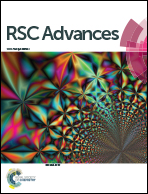Defect ferromagnetism in SnO2:Zn2+ hierarchical nanostructures: correlation between structural, electronic and magnetic properties
Abstract
We report on the ferromagnetism of Sn1−xZnxO2 (x ≤ 0.1) hierarchical nanostructures with various morphologies synthesized by a solvothermal route. A room temperature ferromagnetic and paramagnetic response was observed for all compositions, with a maximum in ferromagnetism for x = 0.04. The ferromagnetic behaviour was found to correlate with the presence of zinc on substitutional Sn sites and with a low oxygen vacancy concentration in the samples. The morphology of the nanostructures varied with zinc concentration. The strongest ferromagnetic response was observed in nanostructures with well-formed shapes, having nanoneedles on their surfaces. These nanoneedles consist of (110) and (101) planes, which are understood to be important in stabilizing the ferromagnetic defects. At higher zinc concentration the nanostructures become eroded and agglomerated, a phenomenon accompanied with a strong decrease in their ferromagnetic response. The observed trends are explained in the light of recent computational studies that discuss the relative stability of ferromagnetic defects on various surfaces and the role of oxygen vacancies in degrading ferromagnetism via an increase in free electron concentration.



 Please wait while we load your content...
Please wait while we load your content...